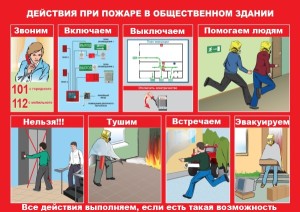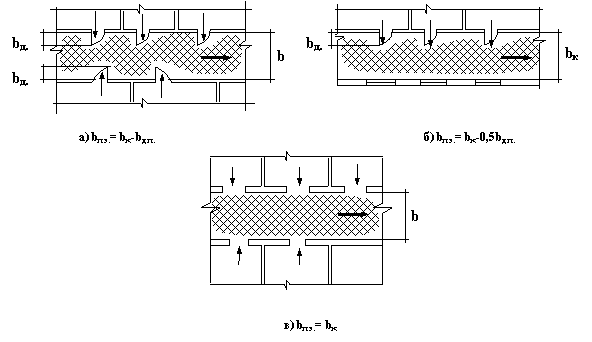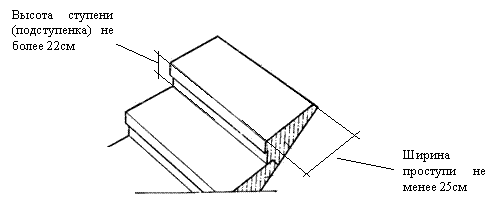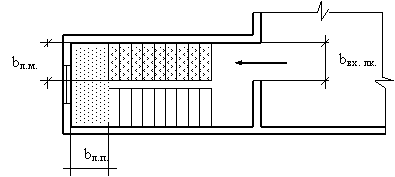Normative legal acts and normative documents governing the development and production of evacuation plans. Evacuation exits and paths
Evacuation and emergency exits are used in order to ensure the complete evacuation of people from a wide variety of objects during a fire and other extreme situations. Contrary to popular belief, these are slightly different definitions.
Evacuation exits and basic requirements for them
Evacuation exits are designed to ensure the complete safety of people in the building or room. Today, a number of requirements are imposed on them, which must be met exactly. The main one determines those sections of a building or structure to which an emergency exit should go:
- to the staircase, corridor or lobby leading directly to the exit from those premises located on the ground floor;
- to the lobby, to the staircase or corridor that lead towards the first floor from those rooms that are located above;
- to a room located in the neighborhood, from which it is possible to freely exit the building.
A building or structure must be broken down into several parts according to degree fire hazard... An evacuation exit is equipped in each of these parts, and they themselves are separated by special barriers that prevent the spread of fire throughout the building.
In a multi-storey building, it is necessary to equip 2 emergency exits on each of the floors. When developing a route, it is important to remember that it must bypass escalators and elevator structures, which can fail as a result of a fire and create serious problems for saving people. In addition, emergency exits must not pass through the following areas of the building:
- stairwells, which are at the same time part of the lobby or corridor. There is a danger of collapse on such structures;
- roof structures if they are not specially equipped as a fire escape exit;
- stair structures that combine three or more floors at once or lead to the basement or basement;
- corridors into which the elevator shafts go. Such areas can be used as an escape route only if the elevator doors and enclosing structural elements are specially equipped in accordance with fire safety rules.
Development of fire evacuation plans
The evacuation exit should be designed taking into account the requirements of the relevant services. The plan must display absolutely all the details - the system used to alert all persons in the room, recommendations for organizing the withdrawal of people from the building. It is also important to develop a work verification system. automatic systems fire extinguishing and measures to be taken in case of their failure.
The grafical part such a plan indicates emergency exits, as well as the location of systems automatic fire extinguishing, telephones by which you can call special services, fire extinguishers, fire hydrants and other elements of the building security system.
In order to competently think over the location of the emergency exit and correctly develop a plan for the withdrawal of people, it is imperative to take into account the size of the building, the location engineering communications, the number of people working in each of the premises and the approximate speed of formation and movement flow of people, the presence of certain modern fire safety systems.
The presence of emergency exits today is the main requirement for buildings for almost any purpose. Their absence or incorrect location can lead to the most unpredictable consequences, and, worst of all, to the death of a large number of people. Therefore, an emergency exit must not only be well thought out, but also equipped modern systems fire extinguishing, locks that allow you to easily open the door outward without any panic and effort. If we are talking about an enterprise or educational institution, it is necessary to take measures to practice the evacuation of personnel or students. Compliance with all the requirements for organizing an evacuation exit will save the lives of many people, even in the most difficult situation.
Emergency exits
Exits that do not meet the existing requirements for evacuation are classified as emergency exits. They are used to further ensure the safety of people during a fire or other extreme situation. When developing an evacuation plan, they are not taken into account, however, they can play an important role in rescuing the personnel of enterprises, visitors to entertainment establishments or residents of a multi-storey building.
Emergency exits include the following:
- exit from the premises through specially equipped hatches, as well as a door or window with minimum size 1.5 by 0.75 meters;
- exit to roof covering, which is protected from penetration of fire and has a high degree of fire resistance;
- exit to the loggia or balcony, which has a blank wall;
- exit in adjacent room, which is protected from the spread of fire or into a fire compartment adjacent to the room;
- emergency exit to a loggia or balcony, which are connected to other such structures by a special fire escape.
As already mentioned, such exits cannot be used as the main ones in the process of rescuing people from a building engulfed in fire. However, if the approach to the emergency exit is difficult or impossible for some reason, you can use the emergency exit.
Modern equipment for evacuation and emergency exits
In order to avoid panic and a large crowd of people at the emergency exits, today it is possible to use effective modern equipment, which allows not only to notify all those present about the fire, but also to open the doors locked from the outside in a timely manner.
Such systems include the following devices:
- electric lock that can be set to close on time. This function allows you to keep the door open during the working day or school hours, ensuring the possibility of unhindered evacuation in the event of any emergency;
- emergency opening button, which can be activated in the event of failure of the electronics;
- microprocessor-based control system for the emergency opening button and automatic unlocking of the electric lock in certain time;
- anti-panic latch (lock), which allows you to close the door from the outside and open it from the inside at any second by pressing the handle.
Both mechanically operated and electronic emergency exit systems are used today. The use of the latter is more preferable, since in addition to safety for people in the building and the ability to easily open the door, they provide the following advantages:
- constant control over the exit from the building, the possibility of integration into common system video surveillance;
- protection against uncontrolled entry and exit from the building;
- the ability to connect emergency exit systems to the fire alarm system, which will make it possible to automatically open the door in case of fire.
The use of modern electronic equipment is appropriate in those buildings in which it constantly resides a large number of people not too familiar with environment... In factories, in schools where evacuation trainings are conducted, mechanized systems can be used. Our company performs design and development complex systems security, including emergency exits. We will select the most modern and effective anti-panic equipment for you, install fire alarm, we will ensure uninterrupted operation of the system for a long time.
Evacuation(clause 6.2 SNiP 21-01-97 *) is a process of organized independent movement of people out of the premises, in which there is a possibility of influencing them dangerous factors fire. Evacuation should also be considered the involuntary movement of people belonging to low-mobility groups of the population, carried out by service personnel. Evacuation is carried out along the evacuation routes through evacuation exits. Also in everyday life the terms are used fire evacuation evacuating the building.
Evacuation of peoplein case of fire (GOST 12.1.033-81 *) forced process of movement of people from the zone where there is a possibility of exposure to hazardous factors of fire
The rescue(clause 6.3 SNiP 21-01-97 *) is the forced movement of people outward when exposed to dangerous fire factors or when there is an immediate threat of this impact. Rescue is carried out independently, with the help of fire departments or specially trained personnel, including the use of rescue equipment, through evacuation and emergency exits.
Escape route- the sequence of communication areas leading from the places of stay of people to the safe area. Such a path should be protected by the required standards by a complex of space-planning, ergonomic, constructive and engineering solutions, as well as organizational measures.
Emergency exit- exit to the escape route leading to a safe area in case of fire and meeting safety requirements.
Measures to ensure the protection of escape routes.
Space planning: the shortest distances to emergency exits, their sufficient width, isolation of escape routes from fire and explosive rooms, the ability to move to several emergency exits, etc.
Ergonomic: assignment of the size of escape routes and exits corresponding to the anthropometric dimensions of people, the peculiarities of their movement, rationing of efforts when opening doors, etc.
Constructive: strength, stability and reliability of structures of evacuation routes and exits, standardization of the flammability of finishes on escape routes, height differences on traffic routes, step sizes, slope of stairs and ramps, etc.
Engineering and technical measures: organization of smoke protection, equipment automatic installations fire extinguishing, design of the required illumination, placement of light indicators, loudspeakers of the notification system, etc.
Organizational: ensuring the functioning of all emergency exits in the event of a fire and maintaining the space-planning, design, ergonomic and engineering indicators at the required level, for example: preventing the blockage of escape routes and exits with combustible materials, as well as objects, reducing them throughput etc.
General requirements for evacuation routes and emergency exits according to SNiP 21-01-97 * "Fire safety of buildings and structures".
|
Route numbers |
Description of the evacuation route from the premises of the first to the outside: |
|
1 |
directly; |
|
2 |
across the corridor; |
|
3 |
through the lobby (foyer); |
|
4 |
through the staircase; |
|
5 |
through the corridor and lobby (foyer); |
|
6 |
through the corridor and staircase; |
|
7 |
Rice. 1a. Evacuation exits from the premises of the 1st floor

|
Route numbers |
Description of the evacuation route from the premises of any floor, except for the first: |
|
1 |
directly into the stairwell or on the stairs of the 3rd type; |
|
2 |
to the corridor leading directly to the staircase or to the stairs of the 3rd type; |
|
3 |
to the hall (foyer), which has an exit directly to the staircase or to the staircase of the 3rd type; |
|
4 |
to an adjacent room (except for a room of category A and B), provided with emergency exits |
Rice. 1b. Evacuation exits from rooms located on any floors, except for the 1st.
Escape routes within the premises
Standardized parameters are the distance from the most distant point to the exit from the hall, the total width of the exits from the halls (rooms), placement on the floors of the building and capacity.
For auditoriums, the number of continuously installed seats in a row is also normalized: with one-sided exit from a row no more than 26, with two-sided - no more than 50 (according to clause 1.119).
In cinemas, it is not allowed to design escape routes through rooms that can accommodate more than 50 people. For example, through the room in which the next group of spectators is waiting for the session, through a cafe, etc. (according to clause 1.124).
In sales areas, the width of the main evacuation passages in the sales area should be from 1.4 to 2.5 m, depending on the area trading floor(according to clause 1.111).
In sports and entertainment buildings, the number of people per 1m of width of the evacuation routes from the stands of open sports facilities (clause 1.114), the number of people evacuated through each exit (hatch) in covered sports facilities (clause 1.116), as well as the width of the evacuation routes in the stands are normalized. (p. 1.117).
Escape routes within a floor
The main standardized parameters for corridors are their width, the length of the paths of movement and the width of the exit from the corridor to the staircase.
As a rule, the length is set depending on the location of the room - between staircases or in a dead-end corridor or hallway and is determined depending on the density of the flow of people, on the degree of fire resistance and functional purpose building.
An analysis of the methodology for standardizing the evacuation process shows that the criterion for determining a room with an exit to a dead-end corridor and a room located between the stairwells is the number of directions for evacuation. One direction of evacuation from the premises is "a room with an exit to a dead-end corridor", two or more - "a room located between the stairwells."
The capacity of premises facing a dead-end corridor is also standardized, for example, for public buildings from 80 to 125 people
The width of the evacuation exits from the corridor to the staircase, as well as the width flight of stairs stairs are set depending on the fire resistance of the building, the class of constructive fire hazard of the building, the volume and category of the room.
With doors opening from the premises to the corridors, the width of the corridor should be taken as the width of the evacuation route along the corridor, reduced:
- half width door leaf- with one-sided doors;
to the width of the door leaf - with two-sided doors, fig. 2 (according to clause 6.26 *)

Rice. 2. The width of the evacuation route along the corridor a), b) according to the norms, with two- and one-sided opening of the doors; c) the probable variant observed in reality.
As observations and calculations show, the presence open doors in some cases it does not affect the evacuation process, therefore the actual width of the evacuation route should be determined analytically.
Escape routes by stairs and ramps
The device is not allowed on the escape routes. spiral staircases, stairs completely or partially curvilinear in plan, as well as winding and curved steps, steps with different tread widths and different heights within the staircase and staircase march (according to clause 6.28 *).
The width and slope (Fig. 3) of staircases and ramps are normalized.

Rice. 3. Illustration for determining the slope of the vertical escape routes:
The slope is determined by the ratio H / L, for example, if H = 1.5m, L = 3m, the slope of the stairs is 1: 2
The width of the tread on the stairs should, as a rule, be at least 25 cm, and the height of the step should be no more than 22 cm (according to clause 6.30 *), Fig. 4.

Rice. 4. Standardized values of the dimensions of the steps
The number of climbs in one march is normalized. For example, for public buildings, there should be at least 3 and no more than 16 rises between sites. In one-flight staircases, as well as in one flight of two- and three-flight staircases within the first floor, no more than 18 rises are allowed (according to clause 1.90).
The current norms require that the width of the site be not less than the width of the staircase, and the width of the staircase must be not less than the width of the exit to the staircase (Fig. 5): b l.p. b lm, a b lm b input. OK. (according to item 1.96 *), because otherwise, violation of the condition of unimpeded movement is likely.

Rice. 5. Width of the flight of stairs b lm, width staircase b lm and the width of the entrance to the staircase b entrance. OK.
Stairwells should have an exit to the area adjacent to the building directly or through the lobby, separated from the adjoining corridors by partitions with doors, fig. 6 (according to clause 6.34 *).

Rice. 6. Exit from the staircase to the lobby, separated from the adjoining corridors by partitions with doors
Basement exits and basement floors, which are evacuation, as a rule, should be provided directly outside, separated from the general stairwells of the building. It is allowed to provide evacuation exits from the basements through common staircases with a separate exit to the outside, separated from the rest of the staircase by a deaf fireproof partition of the 1st type, Fig. 7.

Rice. 7. The exit from the basement is provided through a common staircase with a separate exit to the outside, separated from the rest of the staircase by a type 1 firewall.
Outdoor open stairs for evacuation are allowed to be used in climatic region IV and in climatic sub-region III B (except for stationary medical institutions) (according to item 1.99). In other climatic regions, it is allowed to use these stairs for evacuation only from the second floor of buildings (except for buildings of schools and boarding schools, children's preschool institutions etc.), and should be calculated for the number of evacuees in the range from 30 to 70 people (according to clause 1.100).
Indoor open stairs are widely used in public buildings, for example. However, due to their increased fire hazard, their use is limited and is made dependent on the degree of fire resistance, the purpose of the building (in hospitals of medical institutions, open stairs are not included in the calculation of the evacuation of people in case of fire). When using internal open stairs in a building, the norms introduce additional requirements for the space-planning solutions of the building: separation of rooms with such a staircase from adjacent corridors and other rooms fire partitions, the device of automatic fire extinguishing in the entire building, limiting the number of internal open staircases, additional closed staircases, the exit from which is provided directly to the outside.
Evacuation (clause 6.2 of SNiP 21-01-98) is a process of organized independent movement of people out of the premises, in which there is a possibility of exposure to dangerous fire factors. Evacuation should also be considered the involuntary movement of people belonging to low-mobility groups of the population, carried out by service personnel. Evacuation is carried out along the evacuation routes through evacuation exits.
Evacuation of people in case of fire (GOST 12.1.033-81 *) forced process of movement of people from an area where there is a possibility of exposure to hazardous fire factors
Rescue (clause 6.3 of SNiP 21-01-98) is the forced movement of people outward when exposed to dangerous fire factors or when there is an immediate threat of this impact. Rescue is carried out independently, with the help of fire departments or specially trained personnel, including the use of rescue equipment, through evacuation and emergency exits.
An evacuation route is a sequence of communication sections leading from places where people are staying to a safe area. Such a path should be protected by the required standards by a complex of space-planning, ergonomic, constructive and engineering solutions, as well as organizational measures.
Evacuation exit - exit to the escape route leading to a safe area in case of fire and meeting safety requirements.
Measures to ensure the protection of escape routes.
· Space-planning: the shortest distances to emergency exits, their sufficient width, isolation of escape routes from fire and explosive rooms, the ability to move to several emergency exits.
· Ergonomic: assignment of the sizes of escape routes and exits that correspond to the anthropometric dimensions of people, the peculiarities of their movement, rationing of efforts when opening doors.
· Constructive: strength, stability and reliability of structures of evacuation routes and exits, rationing of flammability of finishing on escape routes, height differences on traffic routes, dimensions of steps, slope of stairs and ramps.
· Engineering and technical measures: organization of smoke protection, equipment with automatic fire extinguishing installations, design of the required illumination, placement of light indicators, loudspeakers of the warning system.
Organizational: ensuring the functioning of all emergency exits in case of fire and maintaining at the required level of space-planning, design, ergonomic and engineering indicators, for example: preventing the blockage of escape routes and exits with combustible materials, as well as objects, reducing their throughput.
The head of the institution and body of the Federal Penitentiary Service of Russia is obliged to organize the development of instructions on measures to ensure fire safety on the territory and facilities of the institution, on the actions of the staff of the institution and convicts in the event of a fire, as well as plans for their evacuation in the event of a fire ... Provide a system (installation) for alerting people about a fire. These documents must be visually decorated and posted on the floors and in the premises of the facilities of the institution taking into account the peculiarities of the regimes for the detention of convicts .
Clause 3.1.2.
For all administrative, industrial, residential, warehouse buildings and structures, plans (schemes) for the evacuation of people in the event of a fire and instructions on fire safety measures must be developed and posted in conspicuous places (the requirements for drawing up instructions and plans for evacuation are set out in Appendices 1, 2 of these Rules).
Appendix 2.
REQUIREMENTS FOR DRAFTING EVACUATION PLANS
1. In all institutions and bodies of the Federal Penitentiary Service of Russia, the administration should develop plans for the evacuation of people and material assets in the event of a fire. Evacuation plans must be drawn up in accordance with the requirements of GOST R 12.2.143-2002.
2. Evacuation plans are subdivided into storey, sectional, local and summary (general).
Floor evacuation plans are developed for the floor as a whole.
Sectional plans are developed if:
Floor area over 1000 sq. m;
There are several separate emergency exits on the floor, separated from other parts of the floor by a wall (partition);
The floor has sliding, lifting and lowering and revolving doors, turnstiles;
Escape routes are intricate or long.
Second copies of storey (sectional) evacuation plans related to one building, structure, vehicle or facility should be included in the consolidated (general) evacuation plan for the building, structure, vehicle or facility as a whole.
The summary evacuation plans should be kept by the person on duty and issued at the first request of the liquidation manager. emergency.
Local evacuation plans should be developed for individual rooms.
3. For each building, structure or section, a independent plan evacuation.
4. Evacuation plans should consist of graphic and text parts.
The graphic part should include the storey (sectional) layout of a building, structure, vehicle, facility, indicating:
Evacuation routes;
Evacuation exits and (or) locations for rescue equipment;
Emergency exits, smoke-free staircases, outdoor open staircases, etc .;
The location of the evacuation plan itself in a building, structure, vehicle, object;
Places for the placement of life-saving appliances, indicated by safety signs;
Placement of funds fire protection, indicated by fire safety signs.
Color graphic images safety signs on evacuation plans must comply with the requirements of GOST R 12.4.026-2001.
Safety signs can be supplemented with digital, alphabetic or alphanumeric designations.
The height of safety signs and symbols on the evacuation plan should be from 8 to 15 mm, on the same evacuation plan they should be made on the same scale.
If it is necessary to specify the features ( technical characteristics) fire protection equipment indicated on evacuation plans may be used legend according to GOST 28130-89.
For safety signs, symbols and conventional graphic symbols explanations of their semantic meaning should be given in the textual part of the evacuation plan.
On floor plans evacuation in the graphic part must indicate the floor number.
The textual part of the evacuation plans for each option should reflect:
Actions of the staff of the institution and convicts in the event of a fire;
Organization of a fire warning system for the staff of the institution and convicts (who decides on the need for evacuation, methods of notification, etc.);
The number of staff of the institution involved in the evacuation, the order, place and time of collection;
Evacuation routes, the order of movement during evacuation, duties of the personnel of the institution involved in the evacuation;
Final points of travel, the procedure for placing evacuated convicts, the provision of medical assistance and the organization of security.
The textual part of the evacuation plans should contain instructions on the actions and conditions of an emergency (in case of fire, accident, etc.), supplemented for clarity with safety signs and fire safety signs.
5. The sizes of evacuation plans are chosen not less than:
600 mm x 400 mm - for storey and sectional evacuation plans;
400 mm x 300 mm - for local plans evacuation.
The size of the evacuation plan is selected depending on its purpose, the area of the room, the number of emergency exits.
6. Escape routes leading to the main emergency exits should be marked with a solid green line indicating the direction of travel.
7. Escape routes leading to emergency escape exits should be marked with a green dashed line indicating the direction of travel.
8. Evacuation plans should be based on photoluminescent materials.
It is allowed to use non-luminous materials to fulfill evacuation plans, which must comply with the requirements of GOST R 12.4.026-2001 established for non-luminous materials.
9. The background of the evacuation plan should be:
Yellowish white or white - for photoluminescent materials;
White for non-luminous materials.
10. Inscriptions and graphics on the evacuation plan (except for safety signs) must be black regardless of the background.
The font of the inscriptions on the evacuation plan is in accordance with GOST R 12.4.026-2001. The font height is at least 5 mm.
11. The evacuation plan (graphic and textual parts) must be visually drawn up and posted on the floor or in the room in strict accordance with the location indicated on the evacuation plan itself, taking into account the peculiarities of the regimes of detention of convicts.
12. In warehouses, in addition to evacuation plans, it is necessary to provide schemes for the placement of explosive and fire hazardous, chemical, toxic substances and materials, as well as to have lists of these substances and materials indicating their names, properties and quantities.
13. Evacuation plans are developed by the administration of institutions and bodies of the Federal Penitentiary Service of Russia, agreed with the leadership of the governing bodies or subdivisions of VPO and approved by the heads of institutions or bodies of the Federal Penitentiary Service of Russia.
14. Development of evacuation plans is carried out at least twice a year. The results are documented in an act indicating the place and time of the event, as well as an assessment of the actions of the administration during the event.
15. When carrying out work on the reconstruction or redevelopment of a building, structure, facility, appropriate changes should be made to the evacuation plan.
16. Examples of the execution of plans and the text part are given in Figures 1 - 3 (hereinafter, the figures are not shown).
In theory, a fire could occur anywhere. Moreover, most often this happens due to:
- banal negligence and careless handling of fire;
- overloading the electrical network or malfunctioning electrical appliances;
- accidental or deliberate arson;
- natural factors (for example, lightning or refraction of sunlight);
At the same time, depending on your location, the rules for evacuation in case of fire may differ. Next, we will consider the two most likely situations.
Evacuation from living quarters
If a fire source is found in an apartment, it is necessary, without wasting time, to call "112" ( emergency call with mobile phone) or "01" (fire brigade) and report the incident with the exact address. This requirement applies to all citizens, which is spelled out in federal law"On fire safety".
In the event that there are elderly people or children in the room, they should be taken outside. After that, it is necessary to de-energize the apartment by unscrewing the plugs or turning off the machines - this is an important point of the rules for evacuation in case of fire. If the fire area is small, it is recommended to start extinguishing yourself, for which you can use thick fabric, water, thick blankets, and soil from flowerpots with plants. If these actions are ineffective, then the room should be left.
When leaving, do not lock front door, but close it tightly, in order to avoid the spread of fire to the staircase or staircase, it is imperative. Please note that according to the rules for evacuating people in case of fire, it is strictly forbidden to use the elevator during a fire.
If the exit is blocked by fire, you should use the window, and while in a multi-storey building, proceed to the balcony, close the door tightly and wait for the firefighters to arrive. It is worth trying to go down pipes or other improvised materials only in critical situations.
The rules for the evacuation of people in case of fire state that the instructions of the Ministry of Emergency Situations or the fire brigade must be followed unquestioningly. Moreover, the law "On fire safety" obliges citizens to provide all possible assistance and assistance in extinguishing the fire, as well as to provide free access to the building for fire trucks.
Evacuation of people from a public building
 In the event of a fire in an office, retail space or any other public place, as in the previous case, you immediately need to call fire brigade... After that, follow the fire evacuation procedure indicated on the diagram of this particular institution - it is in a conspicuous place (usually by stairs or aisles).
In the event of a fire in an office, retail space or any other public place, as in the previous case, you immediately need to call fire brigade... After that, follow the fire evacuation procedure indicated on the diagram of this particular institution - it is in a conspicuous place (usually by stairs or aisles).
The current rules oblige the head of the organization to mandatory post evacuation plans if:
- people gather in the room en masse;
- the floors are equipped with workplaces for ten or more people.
After calling the emergency service, it is necessary to leave the institution, guided by this plan.
Among other things, the heads of organizations in which visitors are received are obliged to appoint persons responsible for fire safety, as well as carry out the following activities:
- instructing employees about actions and in case of fire;
- checking knowledge of the rules of evacuation;
- appropriate training to simulate emergencies.
When evacuating from public building all the voiced instructions of employees of the organization or special services must be followed, since their task is to take visitors and personnel to a safe place as quickly as possible and without panic. At the same time, it should be understood that, unlike guests, staff members are prepared for this situation and perfectly navigate the building where they work.
In the event of a fire, the rules of conduct enshrined in the law oblige citizens, if possible, to help in saving people, extinguishing the fire and protecting material assets. However, in order not to interfere, this should be done only when:
- there are not enough employees in the organization to solve the problem;
- there is a threat to human life (clothes caught fire, people are cut off from the exit, etc.);
- a direct instruction has been received from the person in charge.
In other cases, your actions can be harmful.
Summing up
Based on the foregoing, we can make an unambiguous conclusion that in the event of a fire, it is necessary: call a special fire service, then try to extinguish the flame on your own, and if it is impossible, leave the place of intense fire spread as required by the rules of evacuation in case of fire. In addition, once you are safe, you should provide all possible assistance to professionals.
Video: rules for evacuating people in case of fire






